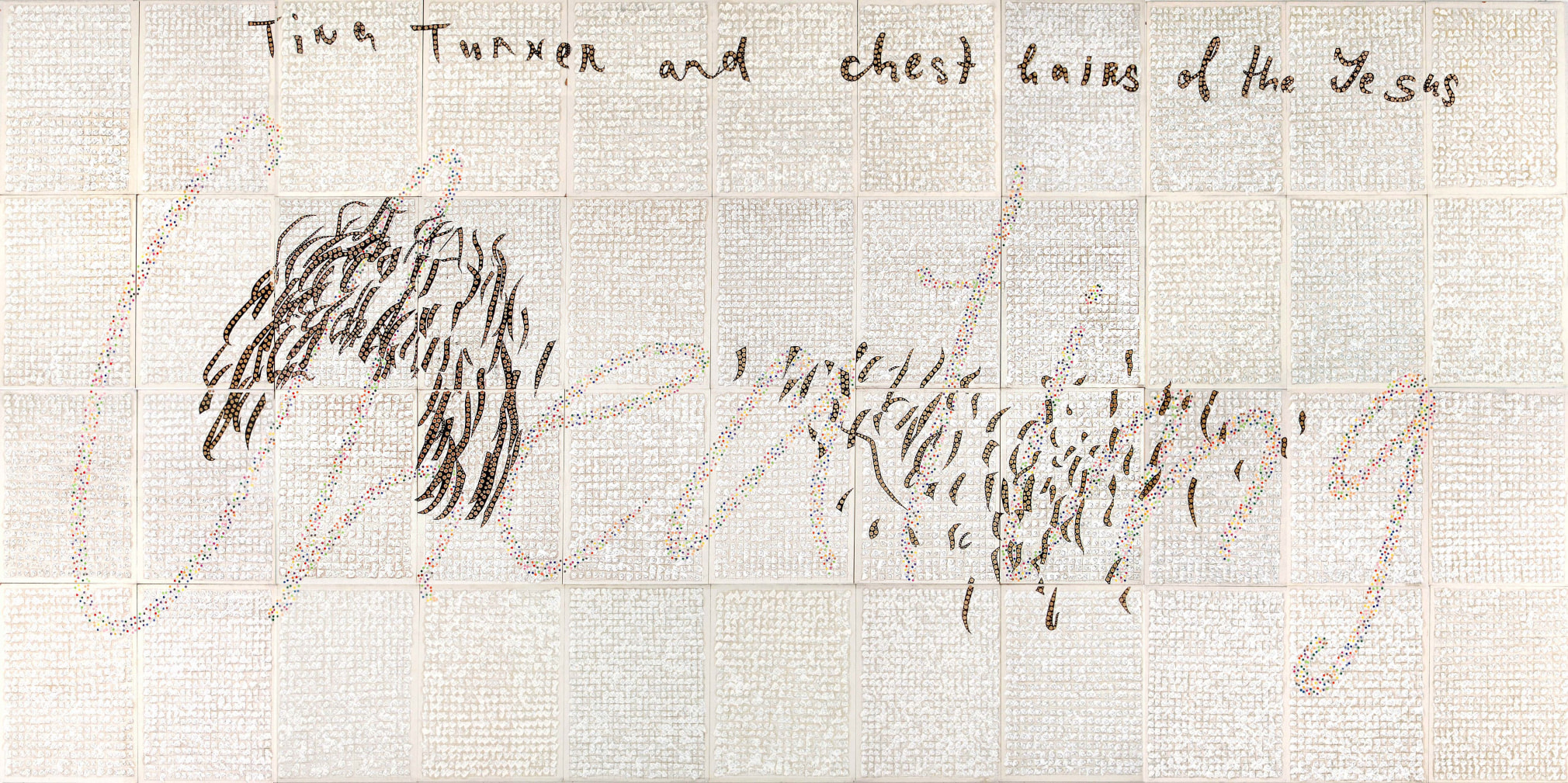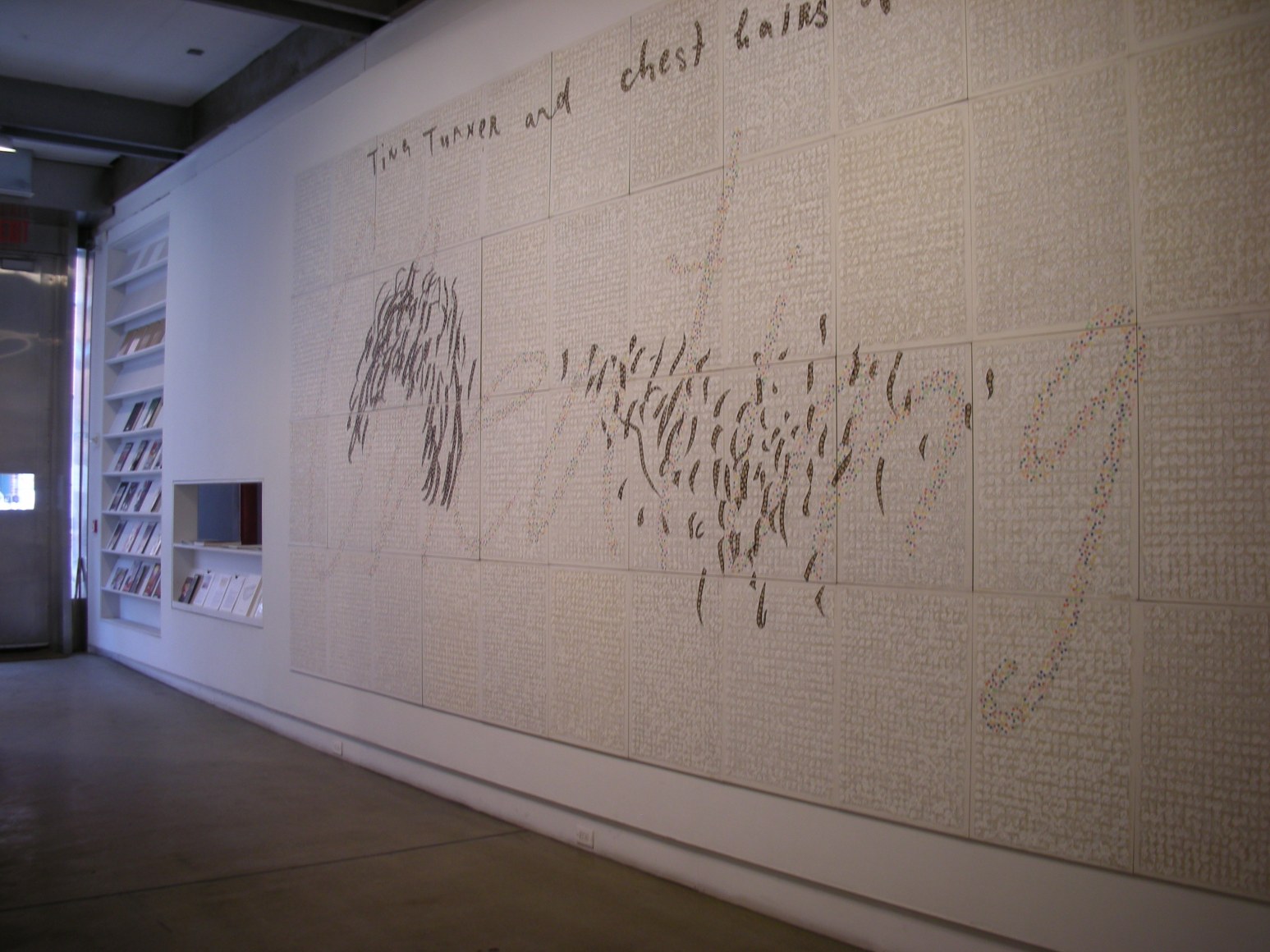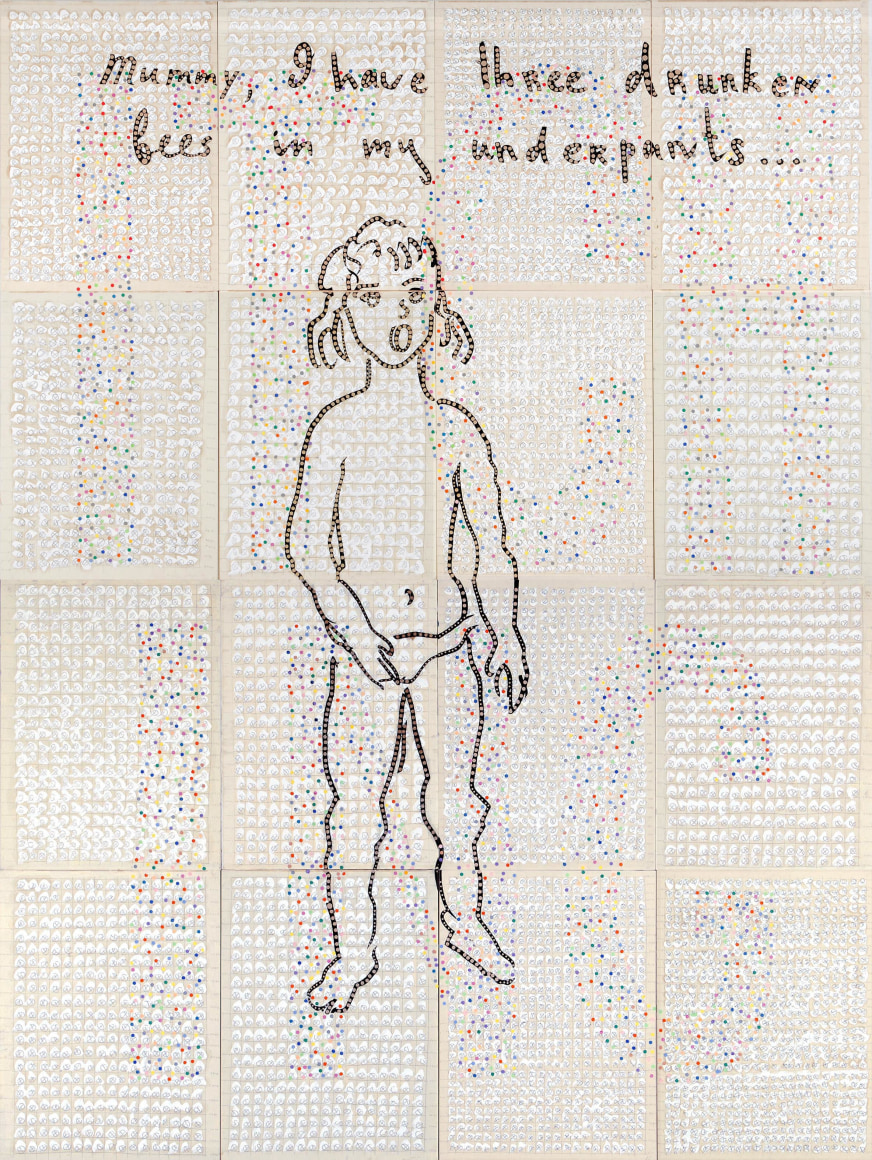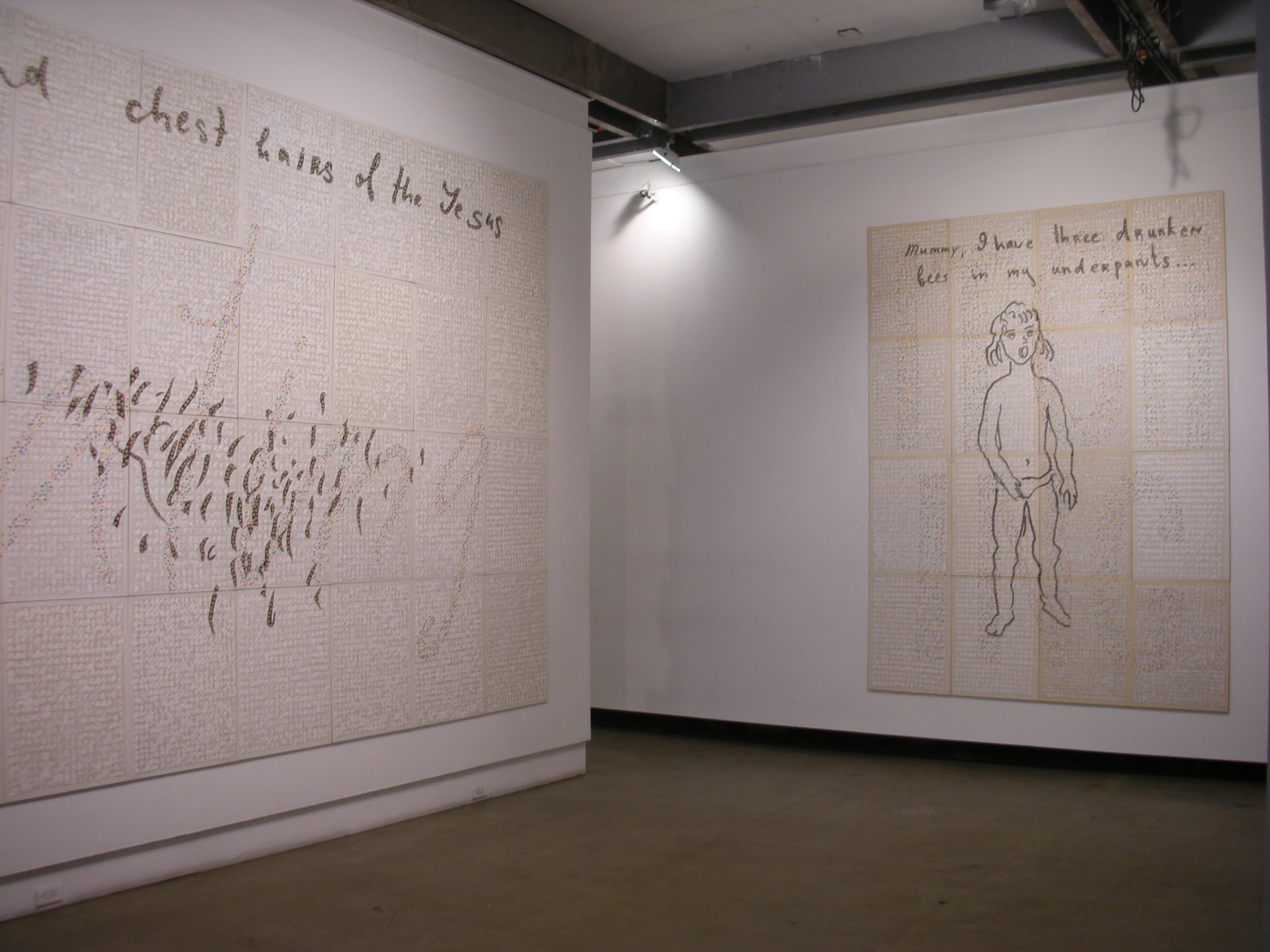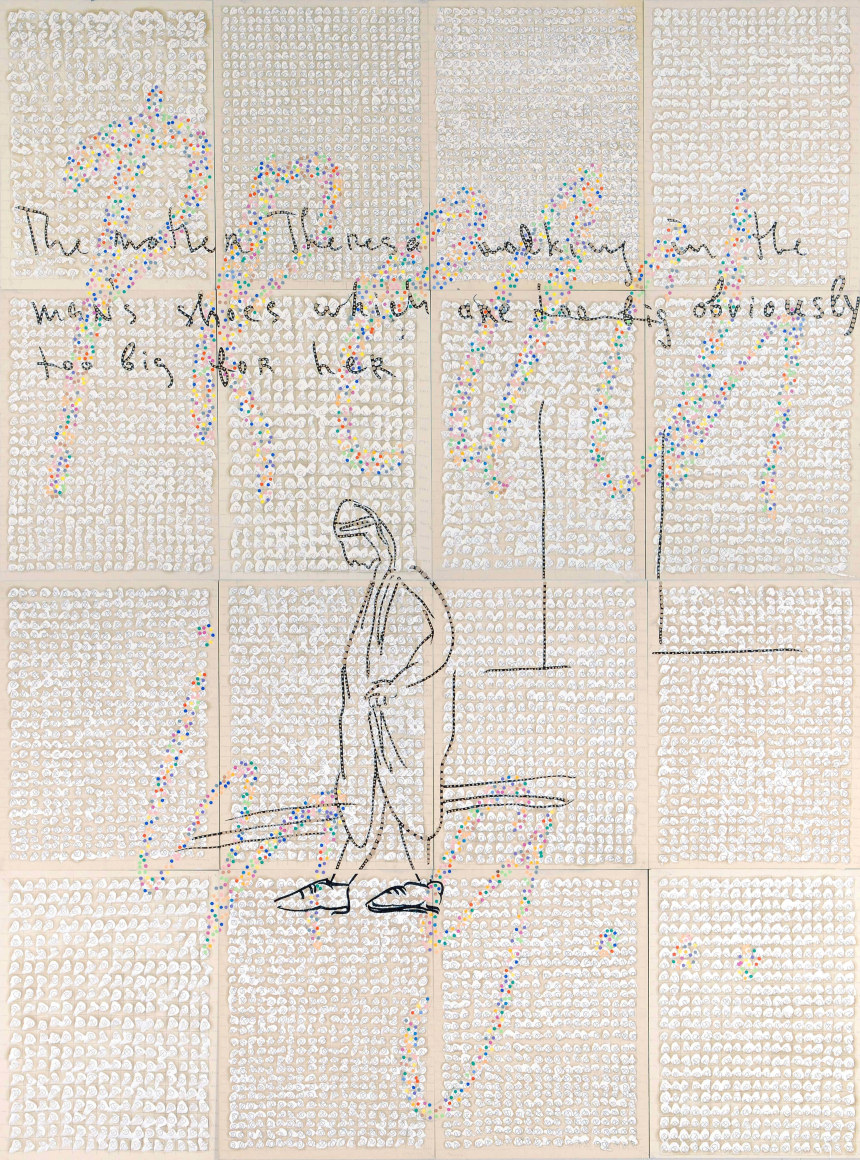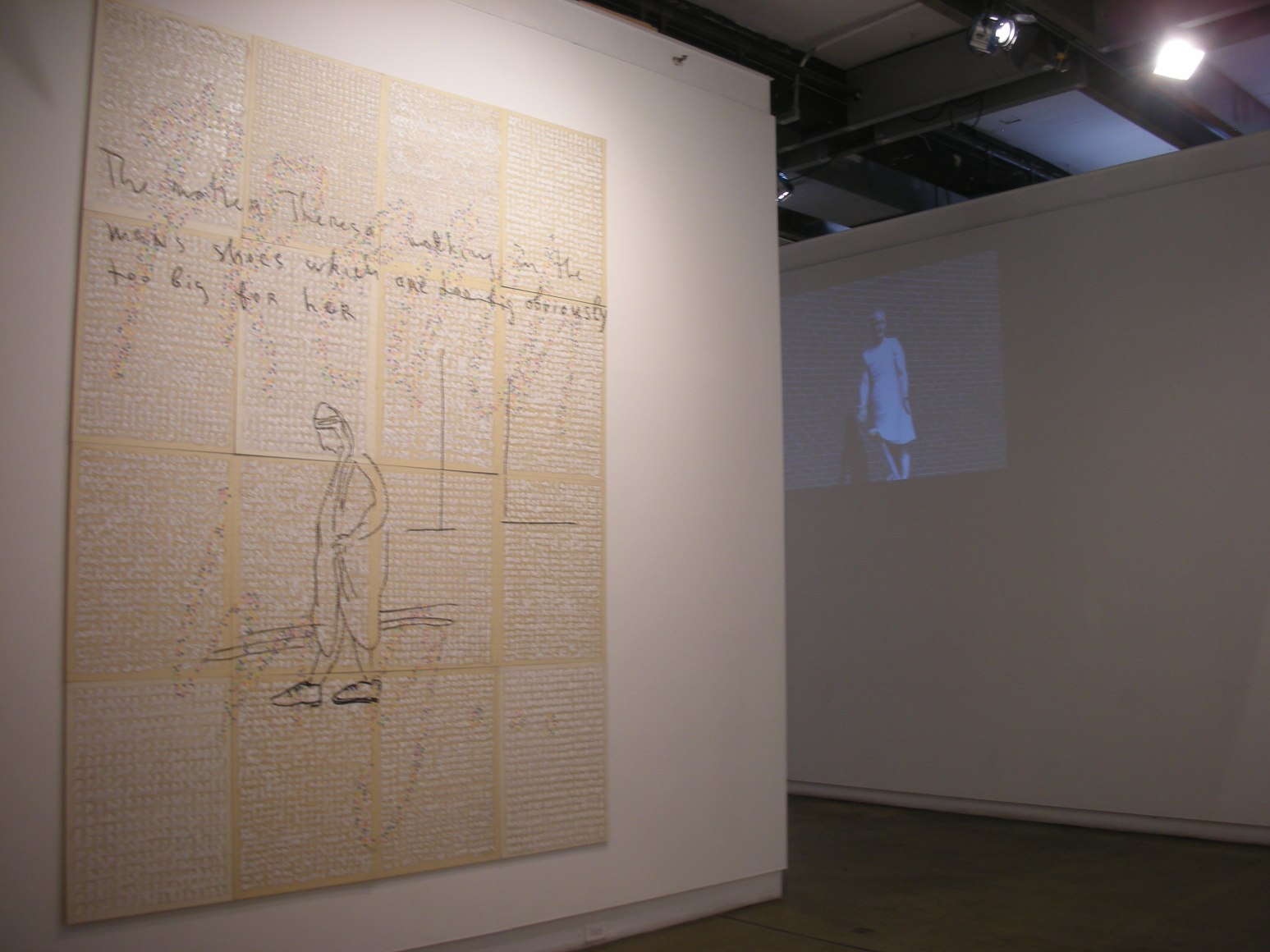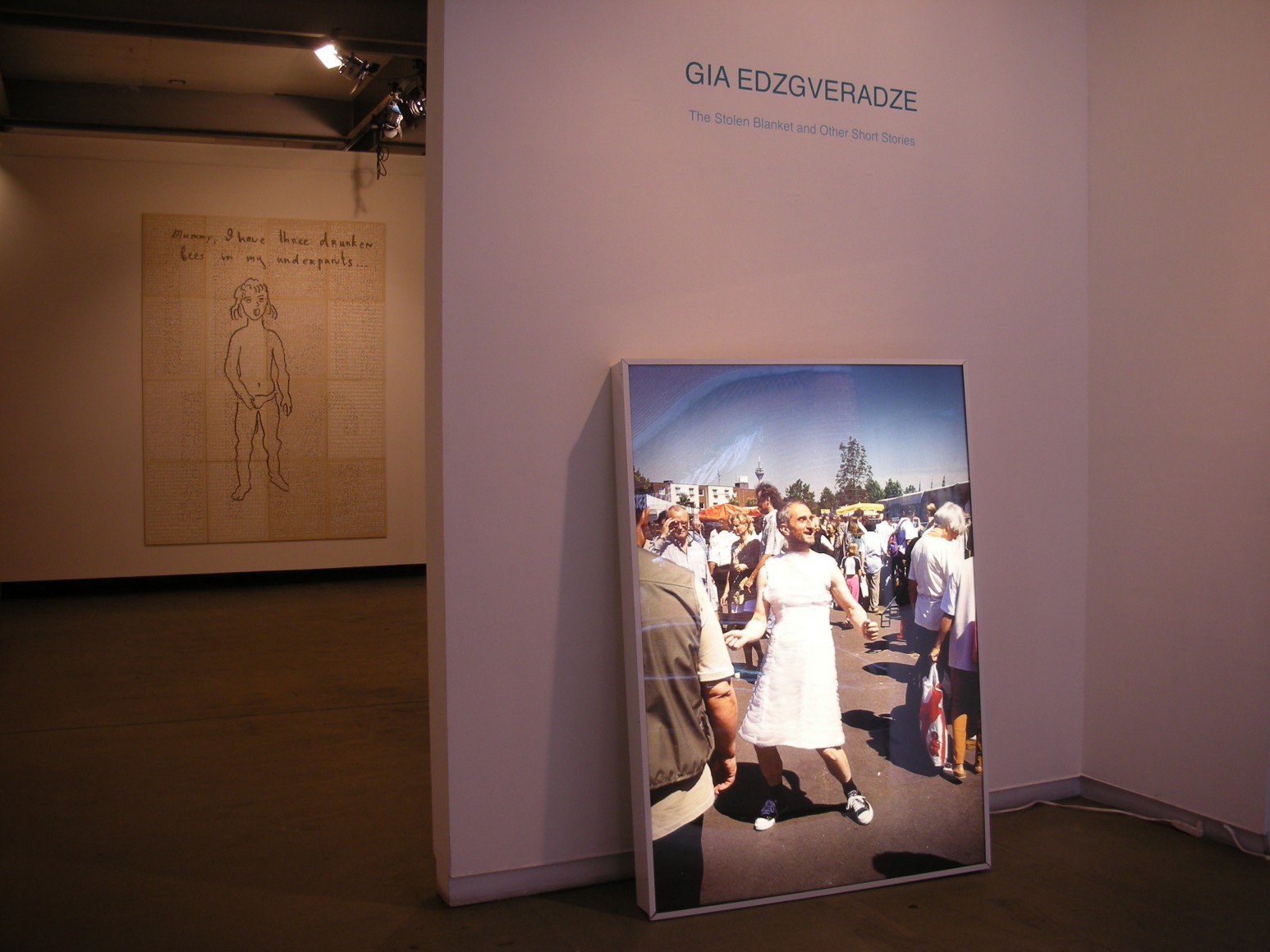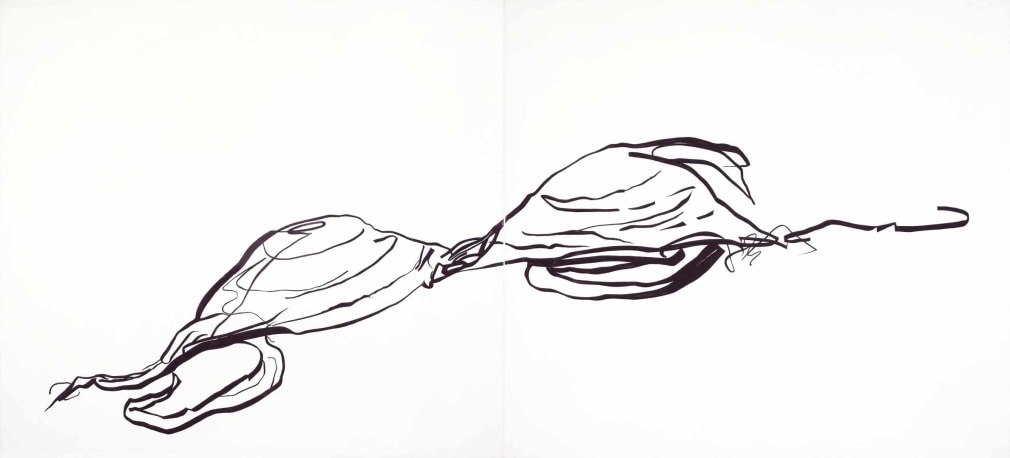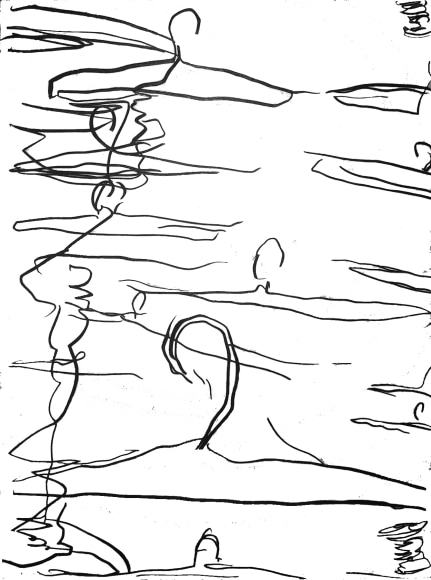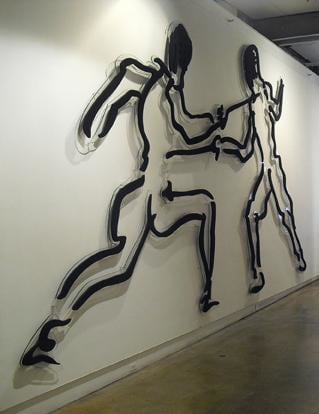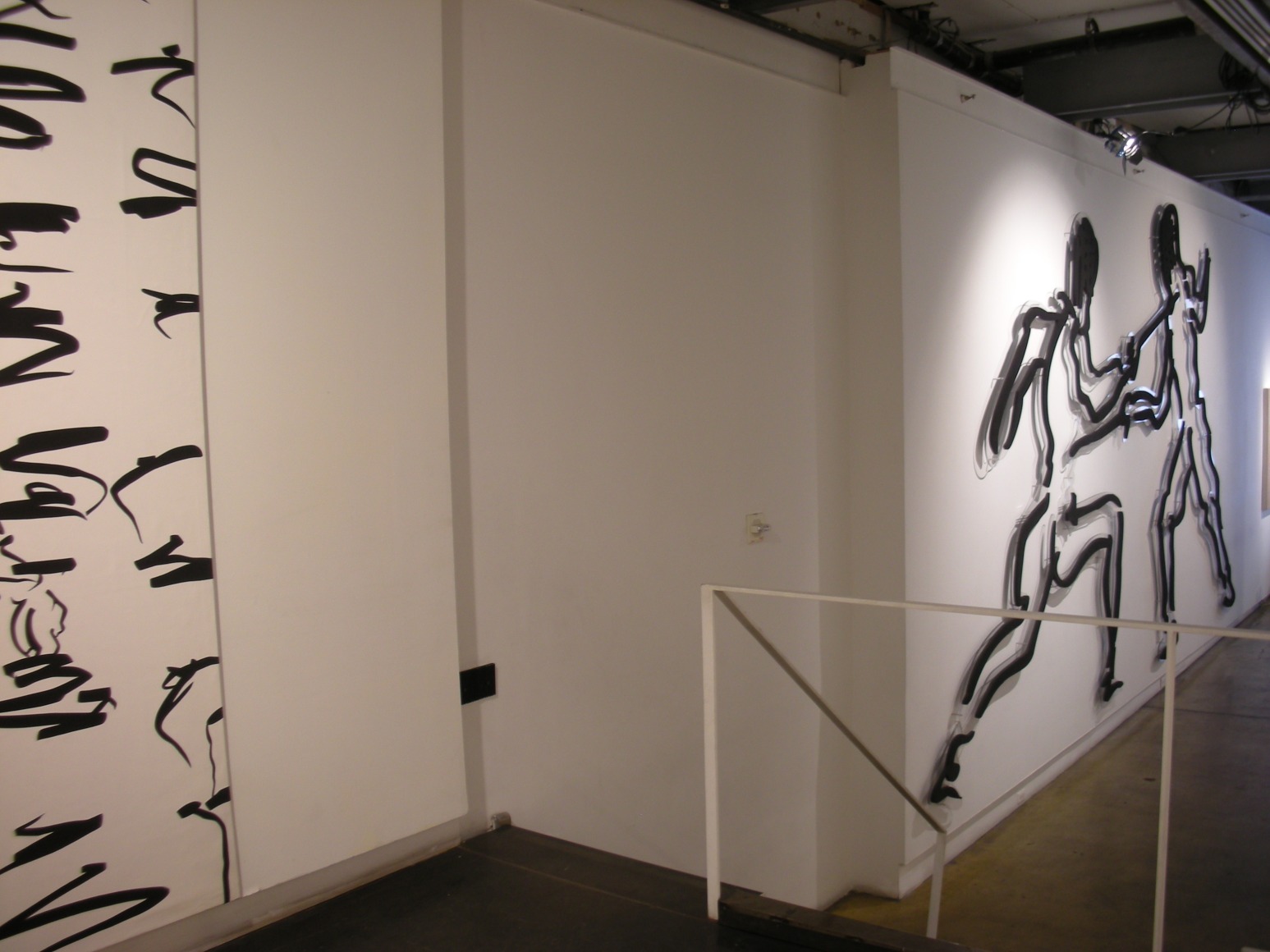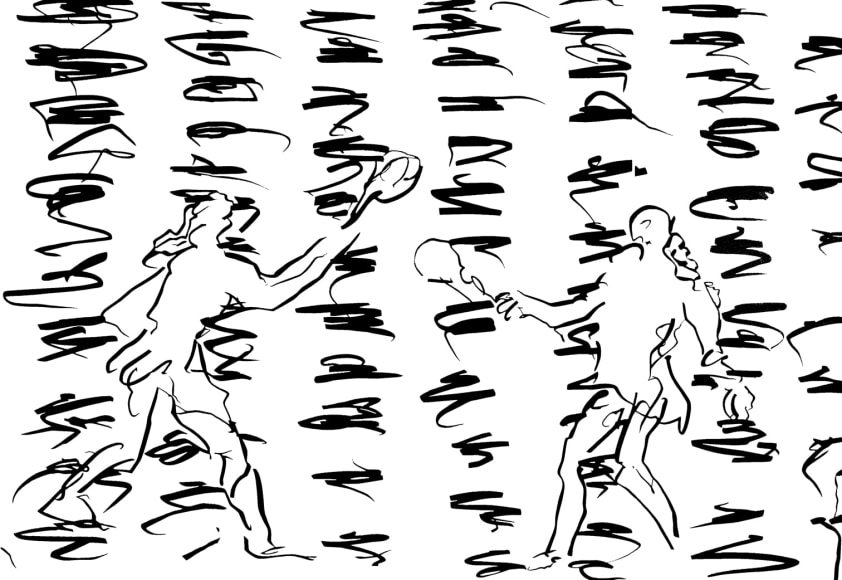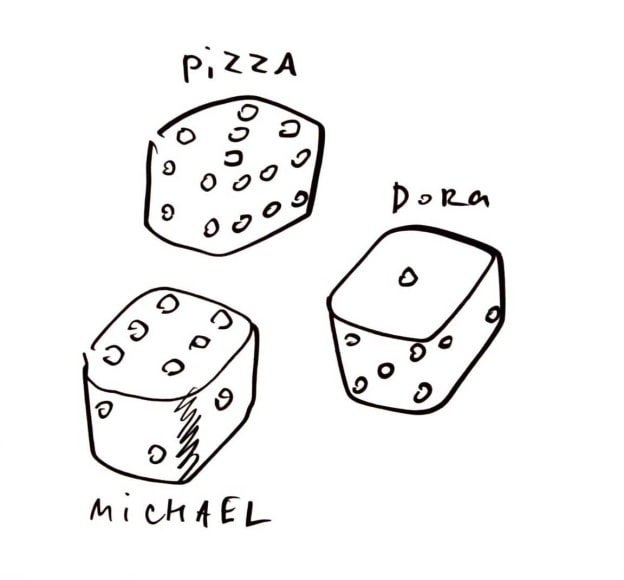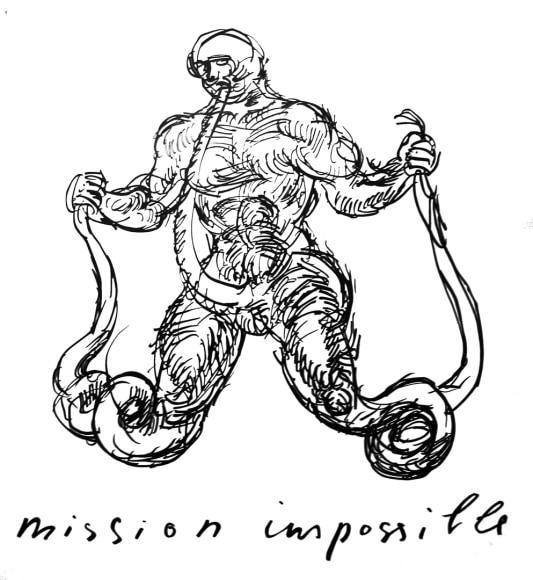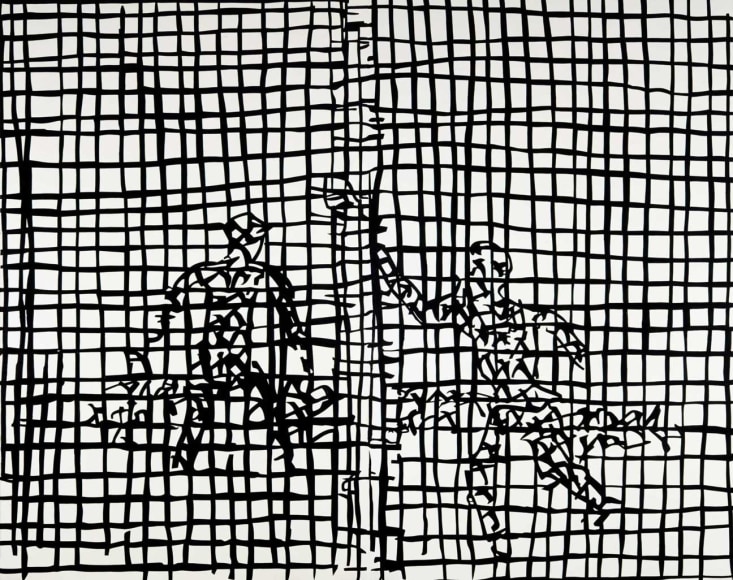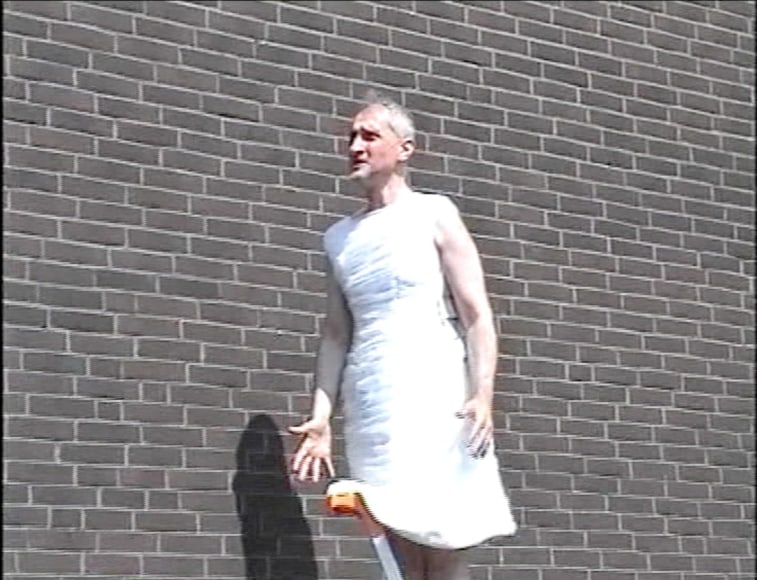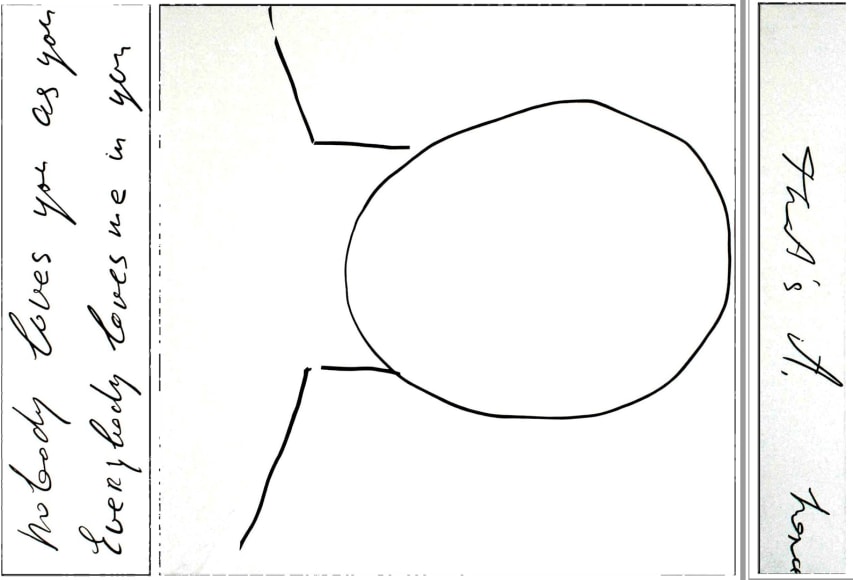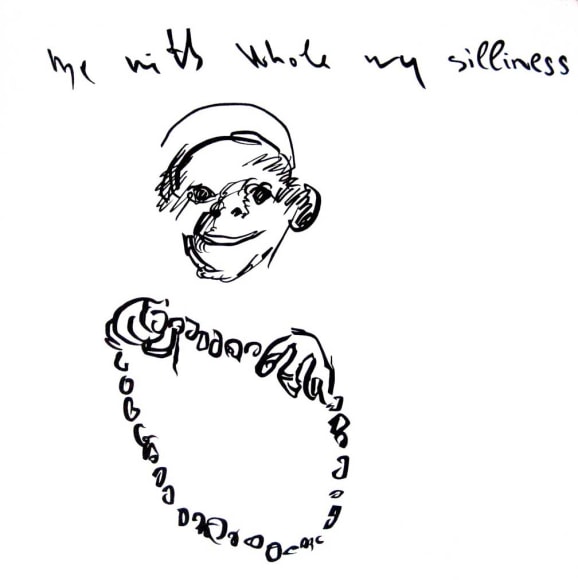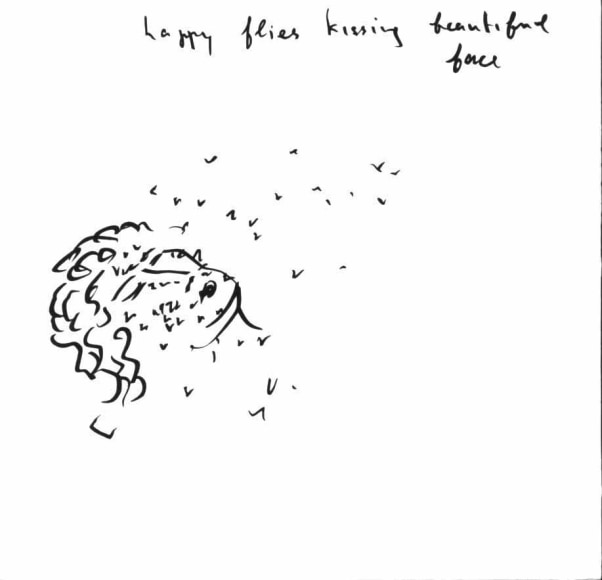STUX Gallery, New York is pleased to announce, “The Stolen Blanket and Other Short Stories”, the first major North American exhibition of work by artist Gia Edzgveradze. Born in the former Soviet republic state of Georgia and based in Germany since 1989, Edzgveradze has exhibited extensively throughout Russia and Europe (Tate Gallery, Venice Biennale, solo gallery and museum exhibitions in Münich, Berlin, Stuttgart, Amsterdam, Budapest), cultivating a body of work including sculpture, performance, video, photography and writing. Diverse in medium though pointed in scope, Edzgveradze’s work comes out of a rigorous engagement with art history, philosophy, politics and theory. At times his work reappropriates, or perhaps more fittingly “shifts”—as in his Malevich homage, The Black Square Shifted to the Left (1974)—existing artworks and cultural objects, while overall, Edzgveradze composes a novel universe of superimposed signs and visual languages.
Self-described as representing “the condition when someone is left without a chance to be secure, cozy, protected and is deliberately forced to be naked and de-territorialized”, Edzgveradze’s “The Stolen Blanket and Other Short Stories” combines themes of intimacy and domesticity with publicness and alienation. Part of a series of large-scale paintings, The Big Bra (1990), at over fourteen feet wide, magnifies and makes public the artist’s personal calligraphic sketch of the ordinarily private undergarment.
Forming the bulk of the exhibition, on view at STUX Gallery are large-scale paintings the artist created by projecting small hand-drawn sketches on canvases and painstakingly reproducing each enlarged copy. Completing a short circuit between drawing and painting via mechanical reproduction, stylistically the sketches invoke the calligraphy used in Georgian script, while the sparse composition points to the work of the Russian Constructivists or Conceptual art. Often underscored by a fragment of text, these paintings depict objects and figures ranging from the quotidian to the uncanny, each rendered in (a copy of) Edzgveradze’s unique gestural hand. Part of the series, Tina Turner and the Chest Hairs of the Jesus (2005), for example, nominally plays upon two senses of “icon” (holy and pop diva), while adding pencil and confetti to the surface of the canvas.

